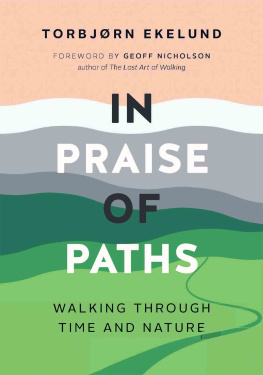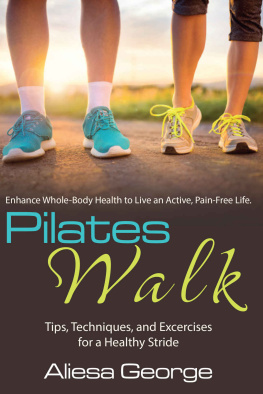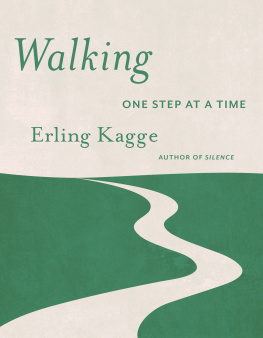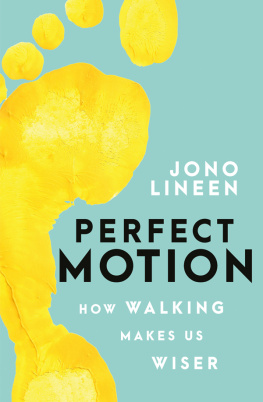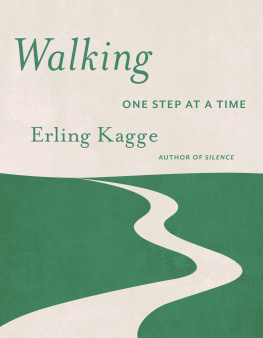Contents
Guide

Also by Shane OMara
Why Torture Doesnt Work:
The Neuroscience of Interrogation
A Brain for Business A Brain for Life
IN PRAISE OF
WALKING
A New Scientific Exploration
SHANE OMARA

Copyright 2019 by Shane OMara
First American Edition 2020
First published by The Random House Group Ltd. under the title In Praise of Walking: The New Science of How We Walk and Why Its Good for Us
All rights reserved
For information about permission to reproduce selections from this book, write to Permissions, W. W. Norton & Company, Inc., 500 Fifth Avenue, New York, NY 10110
For information about special discounts for bulk purchases, please contact W. W. Norton Special Sales at specialsales@wwnorton.com or 800-233-4830
Jacket design by Jared Oriel
Jacket images: (branches) Nik Merkulov / Shutterstock; (leaves) Sergei Kardashev / Shutterstock
Library of Congress Cataloging-in-Publication Data is available
ISBN 978-0-393-65208-6
ISBN 978-0-393-65209-3 (eBook)
W. W. Norton & Company, Inc., 500 Fifth Avenue, New York, N.Y. 10110
www.wwnorton.com
W. W. Norton & Company Ltd., 15 Carlisle Street, London W1D 3BS
CONTENTS
What is it that makes us human? What quality is it that makes us different to all other living creatures? Language usually comes top of the list it is a unique human capacity, without doubt. Other species communicate with each other, and often do so flawlessly and elaborately, with call signs for food and danger, for example. But no other species has anything like human language, with its infinite capacity to carry meaning, content and culture.
We humans also use elaborate tools, and we train other humans in their use; moreover, our tool use evolves over time. But other species do use tools, albeit not with the variety and creativity that we do. Our unique human propensity to cook our food is often cited too: it is true that no other species cooks their food. Cooking gives us nutrients and sustenance from sources we couldnt otherwise use. But this begs the question how do we gather and transport food for cooking? Another item usually on the list is the exceptional investment we make in our children and adolescents, raising and caring for them for extended periods a commitment far greater than any other species makes.
There is, however, one entry often omitted from the list something that is one of our major and singular adaptations (an alteration to our biology that aids our survival), one that is regularly overlooked in the popular mind. It is common to all of the adaptations just mentioned, as well as many more. This is our ability to walk, and especially to walk upright on our two feet, an adaptation known as bipedalism, freeing our hands for other tasks.
Walking makes our minds mobile in a fashion denied other animals. The (now nearly forgotten) neurologist and phenomenologist Erwin Straus captured the sense of how intertwined walking is with our identity and experience in 1952, commenting that our upright posture is an indispensable condition of mans self-preservation. Upright we are, and we experience ourselves in this specific relation to the world. Our upright posture changes our relationship to the world, including, as we shall see, our social world.
Our close relatives, the chimpanzees, use an intermediate form of bipedalism, where they walk using a combination of their hands and feet. This adaption is known as knuckle-walking, and it is not an especially efficient way of getting around. Their spinal columns are not perpendicular to the ground with a mobile head on top. For humans, walking bipedally has involved dramatic modifications and adaptations across the whole length of our bodies, from the top of our head all the way to our toes.
What does walking on our two feet give us that makes us different? In evolutionary terms, bipedalism enabled us to walk out of Africa and to spread all over the world to the far distant glaciers of Alaska, and the sun-baked deserts of Australia. Its a unique ability that has defined human history.
Walking upright has also given us all sorts of other physical advantages. Bipedal walking frees our hands, meaning we are able to carry food, weapons and children. Shifting locomotion to our feet, stabilising our balance along the spine and hips, has allowed us to throw stones and spears, to creep along and attack others with primitive stone axes, to gather up the stolen spoils of assault and combat, and to quietly disappear into the night. We have been able to carry our young often over great distances by simply putting one leg in front of the other. Walking upright makes our minds mobile, and our mobile brains have marched to the far horizons of our planet.
But the benefits of walking arent solely confined to our evolutionary history walking is hugely beneficial for our minds, our bodies and our communities. Walking is holistic: every aspect of it aids every aspect of ones being. Walking provides us with a multisensory reading of the world in all its shapes, forms, sounds and feelings, for it uses the brain in multiple ways. Walking together can be one of the best experiences of walking. Social walking marching in concert and with purpose can be an effective goad for real change in society. Walking is so vitally, centrally, important to us, at both individual and collective levels, that it should be reflected in the way we organise our lives and societies. Our public policymaking needs to fully embrace why walking makes us so distinctively human, and should feed in to our urban and suburban planning. I look forward to the day when physicians the world over write prescriptions for walking as a core treatment for improving our individual and aggregate health and well-being. In fact, GPs in the Shetland Islands have already started prescribing beach walks as a preventative treatment against maladies of brain and body.
Throughout this book, we will celebrate the full sweep of human walking, from its origins deep in time, through how the brain and body perform the mechanical magic of walking, to understanding how walking can set our thoughts free, all the way to the most social aspects of walking whether its a four-ball in golf, a country ramble, or a march to try and change society. Along the way, we will draw the lessons to be learned and show the benefits for the individual and society. And these lessons are manifold, and easy to apply.
I will show how walking makes us social, by freeing our hands for tools, and for gestures movements that allow us to signal meaning to others. Walking allows us to hold hands, sending out signals of exclusive romantic involvement; walking allows us to provide physical support to each other; marching in protest is a common feature of our free political lives, which is why the prevention of assembly and of marches is one of the first orders of an autocrat. Walking is good for the body, good for the brain, and good for society at large.
But the converse is also true. We pay the price for our lack of movement, whether it arises because of the environments we occupy, the design of our offices, or from just being idle and sedentary. I want to show in this book how imperative it is that we start walking again. Our brains and our bodies will be the better for it; our moods, clarity of thought, our creativity, our connectedness to our social, urban and natural worlds will all be the better for it. It is the simple, doable, personal fix we all need.



